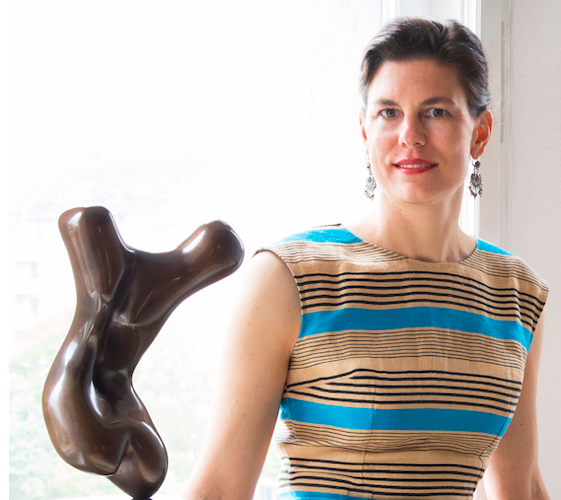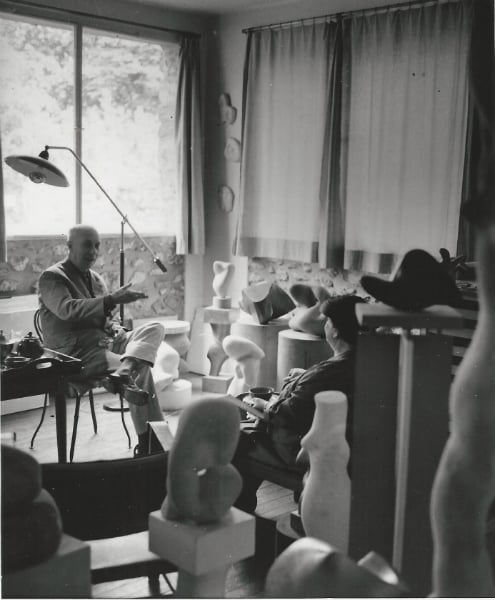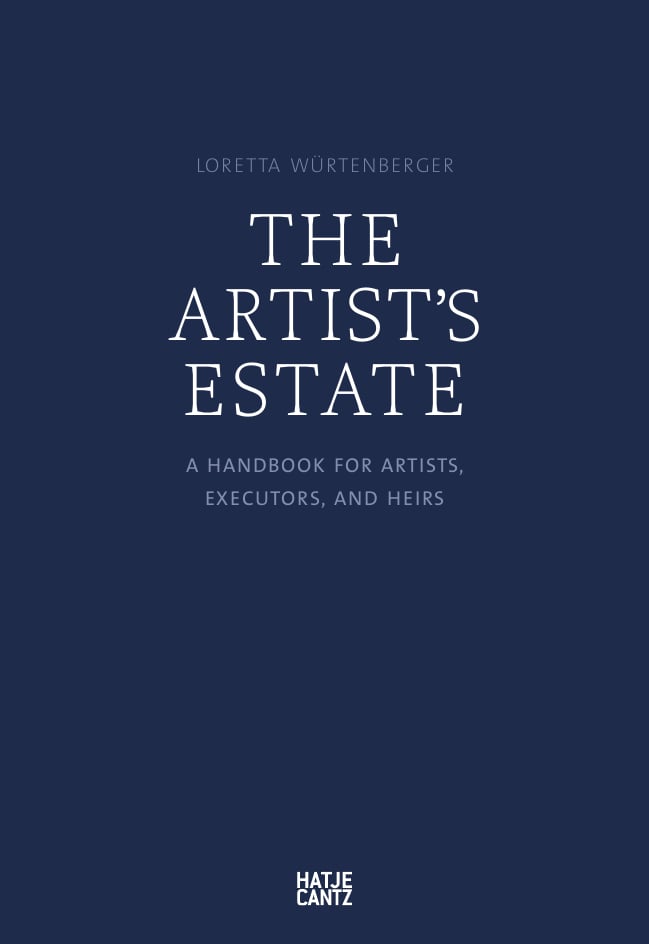Art World
A New Institute Offers Dos and Don’ts of Managing Artists’ Estates
It's the first institute in Europe to offer professional support to heirs.

It's the first institute in Europe to offer professional support to heirs.

Hili Perlson

The field of artists’ estates is undergoing major transformations in response to today’s fast-changing media landscape and art market. Only this week, the Robert Rauschenberg Foundation has eased its image use restrictions in order to keep up to date with contemporary image sharing culture and facilitate scholarship and teaching. And last week, German sculptor Thomas Schütte announced that he is constructing a museum to house his artwork outside of Düsseldorf, a move, as he explained, which had been motivated by thinking of his legacy after his death.
These examples demonstrate that, while artists’ estates are often burdened with tackling legal issues such as copyright and authentications, there are creative ways in which heirs and estate executors, or even living artists, manage their legacy more effectively. And what better way to learn than from other estates’ experience and knowhow?
The newly-launched Institute for Artists’ Estates, founded in Berlin by Loretta Würtenberger and Daniel Tümpel, offers just that: Professional support, consulting, and a network for those managing estates, based on research of successful models. The first of its kind in Europe, the organization grew out of the founders’ recognition of, on the one hand, a boom in the number of artists setting up foundations and estates, and on the other hand, a lack of academic research on the field and a professional support system.
Würtenberger, who co-manages the estate of Hans Arp and Sophie Taeuber-Arp and that of Keith Arnatt, is bringing out a new book in June, The Artist Estate: A Handbook for Artists, Executors and Heirs, and the institute is holding its first networking workshop in Berlin in September, to bring together European estates with large successful American ones, to “really focus on the core of managing rather than on technical legal questions.”
artnet News sat down with Würtenberger, who started her career in the arts as a copyright lawyer, to discuss the “do’s” and “don’ts” of managing estates.
How did the idea for the institute materialize?
I have been working with the estate of Hans Arp since 2010 and was interested in learning from other estates. The more estates I saw, the more I noticed that, different as they are, there are still similarities among the ones that are led successfully. What is the rationale behind a successful estate? That’s when I decided to write a book about the subject. It’s aimed as a handbook for artists who are thinking about setting up an estate during their lifetime, and for their heirs and estate executors who want to learn more about managing them.
Working on the book I also realized that there’s very little academic research into artists’ estates—in fact there’s almost none. The only field which is worked on more intensively is the catalogues raisonnés, but for all other aspects of an artist’s estate, including management, finances, and comparative studies are little worked on. My book provides an overview; any of the topics it addresses could be researched for a further ten years. And that was the first time I thought about founding an institute.
When I interviewed Rainer Judd, the daughter of Donald Judd, about her very good work with the Judd estate, she wanted to know who else have I spoken to, and when I mentioned the different estates she said, “I want to meet them also!” Time and again, I would sense an urge from heirs to get in contact with people who are in a similar situation, because it’s also an emotional topic. That’s how the networking activity of our institute was developed.
Next to the estates we work with on a full time basis, we also do a lot of strategic advising for singular projects with estates. They ask us to set up structures of an authentication committee for example, or a living artist talks to us about issues they encounter with setting up an estate.
What do you think of the legal issues estates are facing with authentications? Some estates have discontinued these services altogether, like the estates of Lygia Clark or Keith Haring, as they are being sued when a work is deemed a fake.
It’s a very sad development although I totally understand why those estates had to do what they did. It mostly affects American estates, and that has to do with the American legal system, which is flawed when it comes to the cost-risk calculation compared to Europe. First of all, the overall costs of defending your case are so much higher in America, and then you have the system, which is in my opinion, totally awkward—where even if you win a case, you still have to bear your own costs. So for the estates it’s a question of how much of the income they have must be spent on lawyers, which simply shouldn’t be the main destination for their resources.
However, it’s a natural obligation of estates to offer authentication services. Authentication committees have a direct connection to working on the catalogue raisonné and archive. And those are such important pillars of an estate’s work.
The institute consults artists wanting to start an estate in their lifetime. What do you think, for example, of Thomas Schütte, who has recently founded a museum for his own sculptures?
What he is doing is excellent and I hope he becomes an example for many others to come, because that’s the best gift you could give to your heirs: Leave an organized estate and a clear idea of how it should be managed.
I’m campaigning for living artists to start taking care of their estates and wills. Picasso is a great “bad” example, because he had the superstition that if he’d write his testament, death would come. It demonstrates how there are so many people who have a problem thinking about their own death, especially artists, who have a right to a certain belief in immortality through their work.

Hans Arp with Charlotte Weidler in his studio, Meudon, 1957.
Photo: Stiftung Arp e.V., Berlin/ Rolandswerth ((IV-139) © VG Bild Kunst, Bonn 2016.
You manage the Hans Arp estate, which was a particularly troubled one before you started working with them. What happened there, and what have you learned from the experience?
That’s an example of how a world-class artist’s legacy can suffer if you don’t manage their estate well. The Arp estate wasn’t handled transparently. That’s one of my biggest takeaways from my work with estates, they should be handled transparently so people have confidence in their work, and this confidence translates to an artist’s market, too. When we took over the Arp estate six years ago the very first condition for starting to work with them was for them to open up their archives completely for research. Through that we developed a transparent catalogue raisonné which gives details on works which were not cast with the artist’s authorization, and that really was a game changer.
What are the biggest mistakes an estate can make?
The biggest problems happen when the heirs fight amongst each other. That’s not a mistake per se, but you couldn’t damage an estate more than by having internal fights leaking to the public. The second huge mistake, as I mentioned, is lack of transparency.
For living artists, I think it’s a big mistake to not leave a will. What Schütte is doing very well, and also Paul Klee did, is to sell only a portion of their oeuvre. Klee had the so-called Sonder Klasse [special category] and if a work was marked SKL it meant it was not to be sold. These works become the basis for the artist’s estate. It’s really laying the financial basis for an estate. Being “art rich and cash poor,” estates generally fund themselves by selling works to create an endowment. And if the artist doesn’t leave enough work, you don’t have enough resources, nor do you have enough to create markets or loan to museums and manifest your position. If an artist really wants to take care of his legacy, there are two things to think of: How do they want their legacy to stay alive, and what provision could they take, like putting works aside, to make that possible.
But what about mid-range artists? Not everyone is where Schütte is financially.
There are wonderful examples out there for mid-size estates that are successful nonetheless. There’s one pre-condition for the success of a mid-sized estate and that is to have talented heirs. I’m thinking of Muna Tseng, the sister of the artist Tseng Kwong Chi; she’s been doing really impressive work keeping his legacy alive.
I’m also thinking of the Philippe Vandenberg estate in Belgium, who invites famous artists from the Benelux countries, like Luc Tuymans for example, to curate shows with his works.
When heirs are confronted with the question of how to do this, I recommend taking the first year for introspection. Shut down the studio, get back all the works that are on loan, and really consider: What and how much do we have, what can we bring in to the estate, and what do we want to bring in to it. Because taking care of an estate is a huge responsibility, and you have to ask yourself, do I really want that, or rather look for external advisors and managers.
Then, you should assess the financial resources available to you and think about what you want to achieve, and whether the resources match those plans or you have to adjust. Especially for mid-sized estates, it’s even more important to become creative in developing ideas because you can’t have it all. If you focus on one or two aspects you can use resources effectively. Strategic planning is the best way to describe this work.

The Artist’s Estate: A Handbook for Artists, Executors, and Heirs, Texts by Loretta Würtenberger and Karl von Trott, published by Hatje Cantz Verlag in June 2016.
It’s an all-consuming occupation, correct?
That’s why the Institute exists. Sometimes the heirs don’t want to engage that much because they have other professional lives, or they don’t want to get so close to their parents, it’s also an emotional thing. Or they just don’t feel qualified. You have to have contacts to museums, curators, galleries, you must know how the museum landscape works and how the gallery world works, and be active and play the game. If you’re not in this world it will be difficult to get the most out of it in terms of best benefitting a legacy.
The Institute for Artists’ Estates is holding its inaugural conference “Keeping the Legacy Alive, A Conference on Artist Estates” in Berlin on September 14-15, 2016.